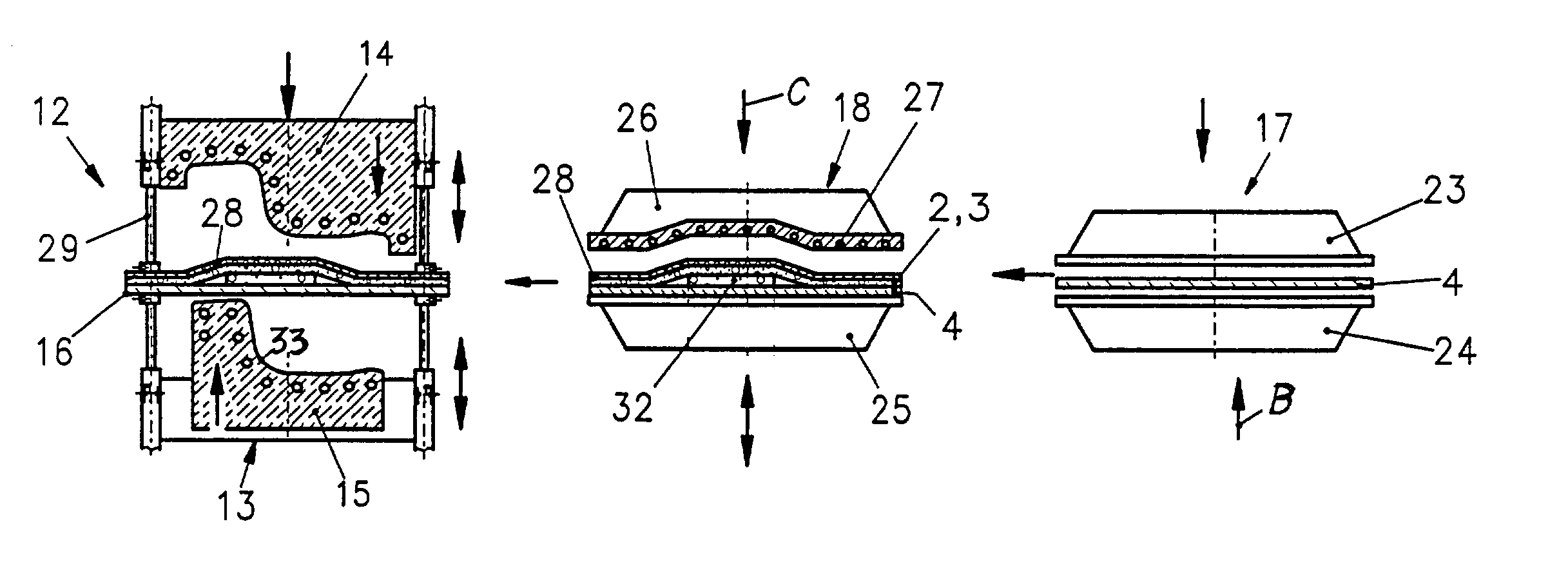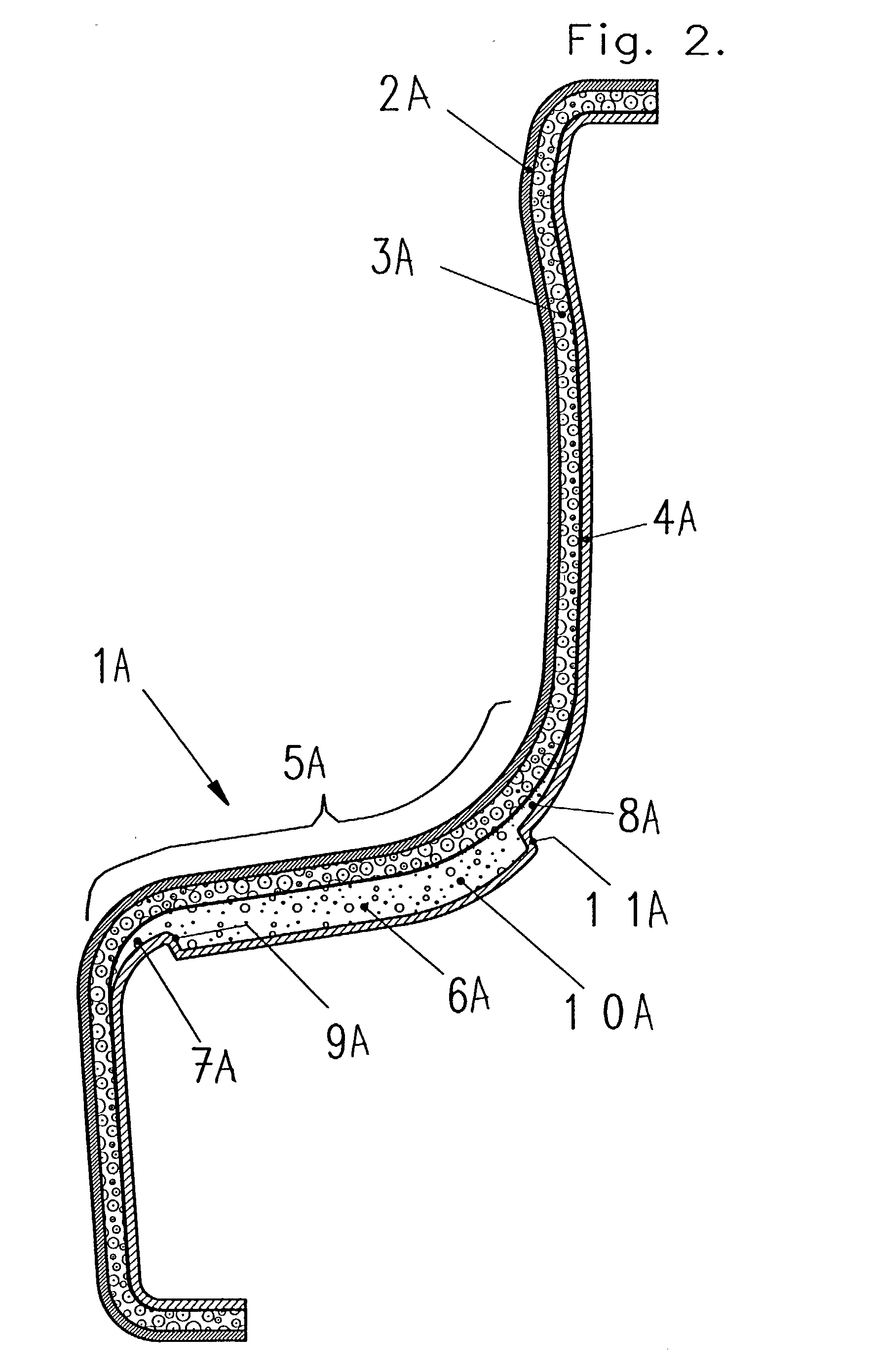Method and apparatus for making a trim component with a foam core having a smoothly varying thickness
a technology of foam core and trim component, which is applied in the direction of lamination, flat rigid surface labeling, domestic articles, etc., can solve the problems of adding an additional process step and complexity to the method, and the process steps or procedures that are required are not environmentally friendly, and the known process requires four separate process steps or procedures
- Summary
- Abstract
- Description
- Claims
- Application Information
AI Technical Summary
Benefits of technology
Problems solved by technology
Method used
Image
Examples
Embodiment Construction
[0030] FIG. 1 schematically shows a cross-section of a trim component 1 according to the invention, for example embodied as an automobile door interior panel 1. The trim component 1 includes a decorative cover material 2, e.g. a fabric, a vinyl film, a synthetic leatherette film, or the like, a foam backing layer 3, and a structural substrate 4.
[0031] The foam backing layer 3 has a nominal uniform thickness along the entire trim component 1 to provide an overall "soft touch" cushioned feel to the trim component 1. The foam backing layer 3 comprises a thermoplastic synthetic polymer foam, preferably a polyolefin foam such as a polyethylene or polypropylene foam. The cover material 2 and the foam backing layer 3 may be provided as a pre-laminated foam-backed cover stock, for example a conventionally known PVC / TPO film. Alternatively, the cover material 2 and the foam backing layer 3 can be provided as separate sheet materials that are melt-bonded and laminated to each other in the cou...
PUM
| Property | Measurement | Unit |
|---|---|---|
| melting temperature | aaaaa | aaaaa |
| melting temperature | aaaaa | aaaaa |
| softening temperature | aaaaa | aaaaa |
Abstract
Description
Claims
Application Information
 Login to View More
Login to View More - R&D
- Intellectual Property
- Life Sciences
- Materials
- Tech Scout
- Unparalleled Data Quality
- Higher Quality Content
- 60% Fewer Hallucinations
Browse by: Latest US Patents, China's latest patents, Technical Efficacy Thesaurus, Application Domain, Technology Topic, Popular Technical Reports.
© 2025 PatSnap. All rights reserved.Legal|Privacy policy|Modern Slavery Act Transparency Statement|Sitemap|About US| Contact US: help@patsnap.com



